
Busycotypus canaliculatus, commonly known as the channeled whelk, is a very large predatory sea snail, a marine prosobranch gastropod, a busycon whelk, belonging to the family Busyconidae.
Maxwellia santarosana, common name the "Santa Rosa murex" is a species of small predatory sea snail, a marine gastropod mollusk in the family Muricidae, the rock snails.

Naticidae, common name moon snails or necklace shells, is a family of medium to large-sized predatory sea snails, marine gastropod molluscs in the clade Littorinimorpha. The shells of the species in this family are mostly globular in shape.

Calliostoma ligatum, common name the blue top snail, is a small prosobranch trochid gastropod mollusk in the family Calliostomatidae, the Calliostoma top snails.

The marine snail Norrisia norrisii is a medium-sized gastropod mollusk within the family Tegulidae. It has several common names, including Norris's top snail, Norris's topsnail, norrissnail, smooth brown turban snail, or kelp snail. It was first described by G.B. Sowerby I under the name Trochiscus norrisii.

Pteropurpura festiva, commonly known as the festive murex, is a species of predatory sea snail, a marine gastropod mollusk in the family Muricidae, the rock snails. Native to the Eastern Pacific, these sea snails grow to 34–67 mm in length.
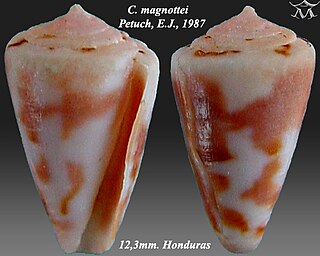
Conus magnottei is a species of sea snail, a marine gastropod mollusk in the family Conidae, the cone snails and their allies.

Conus miliaris, common name the thousand-spot cone, is a species of sea snails, marine gastropod molluscs in the family Conidae, the cone snails and their allies.

Conus nux, common name the nut cone, is a species of sea snail, a marine gastropod mollusk in the family Conidae, the cone snails and their allies.

Conus purpurascens, common name the purple cone, is a species of sea snail, a marine gastropod mollusk in the family Conidae, the cone snails and their allies.
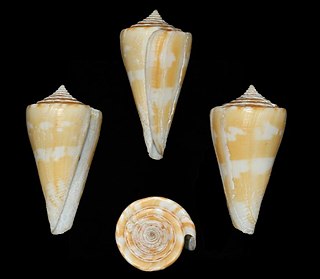
Conus xanthicus, common name the Guaymas cone, is a species of sea snail, a marine gastropod mollusk in the family Conidae, the cone snails and their allies.
Fusiturricula armilda is a species of sea snail, a marine gastropod mollusk in the family Drilliidae.
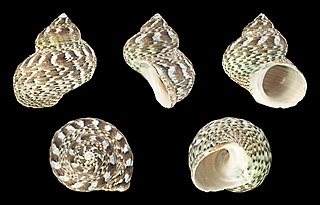
Turbo fluctuosus, common name the wavy turban, is a species of sea snail, marine gastropod mollusk in the family Turbinidae.
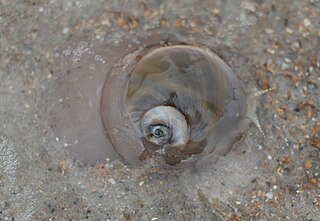
Neverita duplicata, common name the shark eye, is a species of predatory sea snail, a marine gastropod mollusk in the family Naticidae, the moon snails.
Conus morrisoni is a species of sea snail, a marine gastropod mollusk in the family Conidae, the cone snails and their allies.

Margarites pupillus, common name the puppet margarite or the little margarite, is a species of sea snail, a marine gastropod mollusk in the family Margaritidae, the turban snails.

Tegula cooksoni is a species of sea snail, a marine gastropod mollusk in the family Tegulidae.
Solariella tavernia is a species of sea snail, a marine gastropod mollusk in the family Solariellidae.

Conus kirkandersi is a species of sea snail, a marine gastropod mollusk in the family Conidae, the cone snails, cone shells or cones.
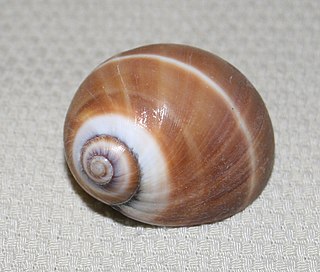
Polinices bifasciatus, or two-banded moon snail, is a species of gastropod mollusc. The animal was first described to science in a work authored by English biologists Edward Griffith and Edward Pidgeon. This was a multi-volume translation of George Cuvier's, Le Règne Animal (1830). The Griffith and Pidgeon work went beyond translation and added a supplement that included the description of Polinices bifasciatus. The description of Polinices bifasciatus is attributed to John Edward Gray. It reads, in its entirety, "Pale brown, with two narrow bands".


















